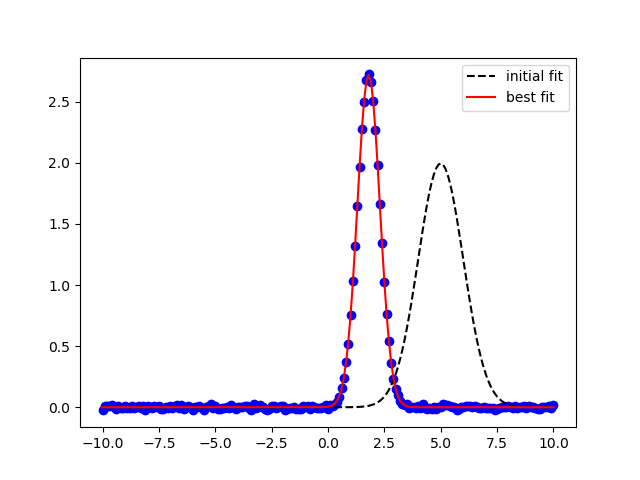Note
Click here to download the full example code
Using an ExpressionModel¶
ExpressionModels allow a model to be built from a user-supplied expression. See: https://lmfit.github.io/lmfit-py/builtin_models.html#user-defined-models
import matplotlib.pyplot as plt
import numpy as np
from lmfit.models import ExpressionModel
Generate synthetic data for the user-supplied model:
Define the ExpressionModel and perform the fit:
this results in the following output:

Out:
[[Model]]
Model(_eval)
[[Fit Statistics]]
# fitting method = leastsq
# function evals = 52
# data points = 201
# variables = 3
chi-square = 0.02184805
reduced chi-square = 1.1034e-04
Akaike info crit = -1828.51661
Bayesian info crit = -1818.60669
[[Variables]]
amp: 3.40725701 +/- 0.00541581 (0.16%) (init = 5)
cen: 1.80147428 +/- 9.1751e-04 (0.05%) (init = 5)
wid: 0.49989801 +/- 9.1751e-04 (0.18%) (init = 1)
[[Correlations]] (unreported correlations are < 0.100)
C(amp, wid) = 0.577
/Users/Newville/Codes/lmfit-py/examples/example_expression_model.py:35: UserWarning: Matplotlib is currently using agg, which is a non-GUI backend, so cannot show the figure.
plt.show()
Total running time of the script: ( 0 minutes 0.089 seconds)